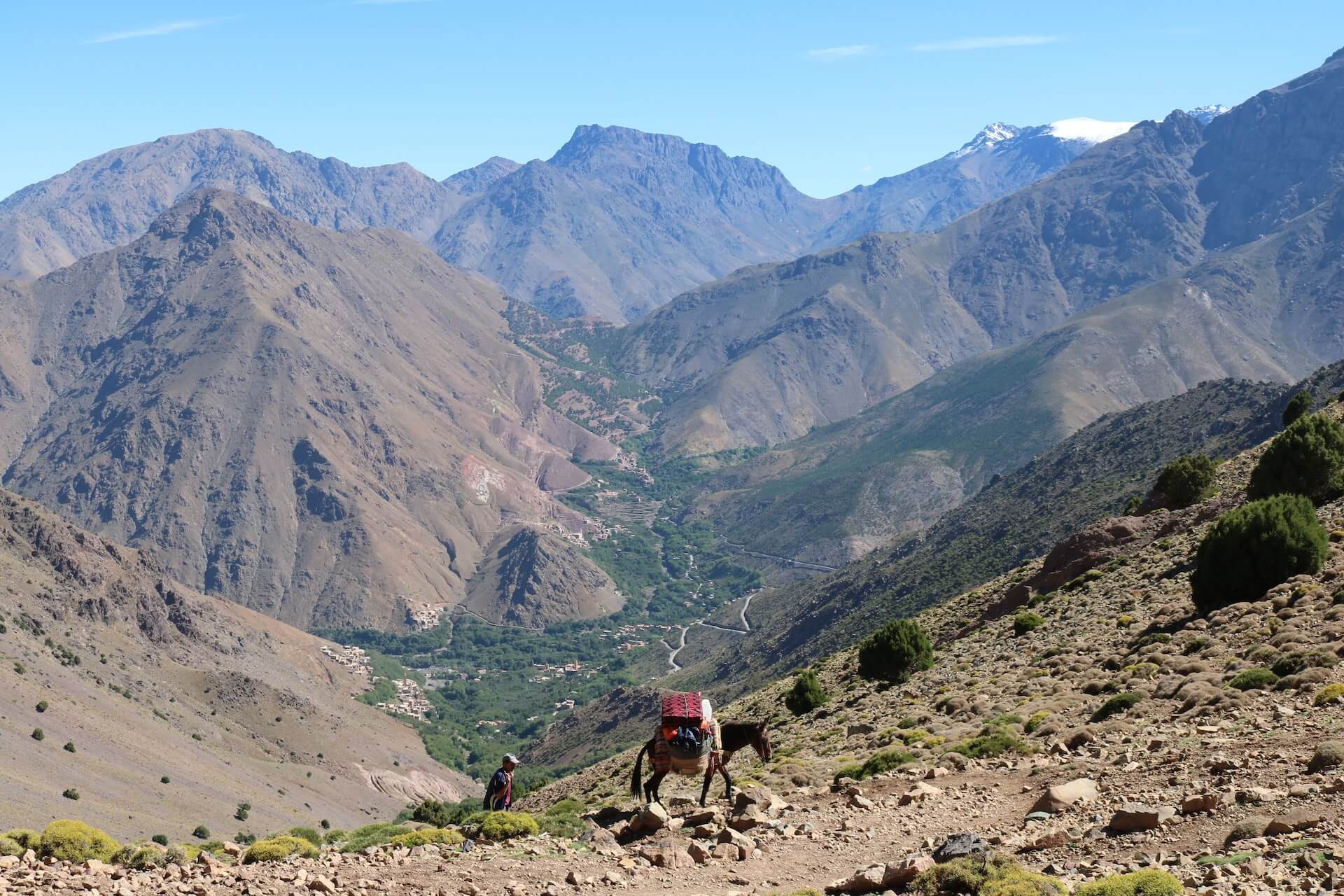Morocco Mountains
``It´s not the Mountains we conquer, but ourselves.``
The Atlas Mountains rise from the Atlantic Ocean and stretch all the way to the Moroccan Algerian border. At its highest point is Mount Toubkal at 4167metres: a popular trekking peak most of the year-round. These mountain ranges dominate the skyline across much of the central parts of the country, while in the north the Rif Mountains, overlooking the Mediterranean Sea, hide beautiful National Parks, waterfalls and coastal medinas. To the south, the Saghro, rising out of the rocky desert in the Anti Atlas and is the birthplace of some of the oldest tribes of Imazhigen people: the indigenous inhabitants of Morocco, the Ait Atta.
The Middle Atlas, are nature lovers, adventurers and outdoors enthusiasts playground. In winter, the high peaks are blanketed in snow and become an international ski resort. The alpine town of Ifrane is built to withstand the weather thus it is given the name “Little Switzerland of Africa”. There are volcanic plateaus, magnificent lakes, amazing trekking and hiking trails, huge cedar forests where the indigenous Barbary Monkeys live, gorges and river sources like Oum Rbiaa. This is the birdwatchers paradise, fishing, horse riding, camping and artisan workshops can all be enjoyed in this region as well as white water rafting when seasonal rains permit.
The Anti Atlas runs almost 300 kilometres from the coastal city of Agadir to Ouarzazate and beyond to the Saghro with countless remote Berber Villages, ancient towns with hidden valleys and oases. It is somewhat less explored than the High Atlas, but no less beautiful in its ruggedness. This is serious trekking country, great for biking, camping and horse riding. This is also where the majority of saffron is grown in the area of Taliouine. Colourful villages like Tafraoute are immersed in fruit and almond blossom in early spring and are a photographers dream.
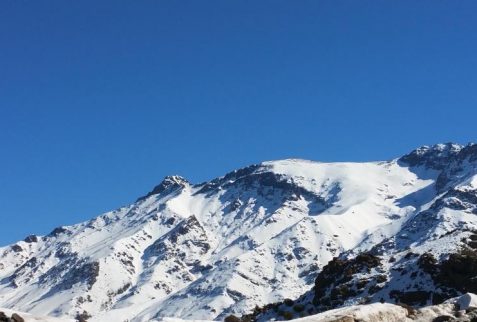


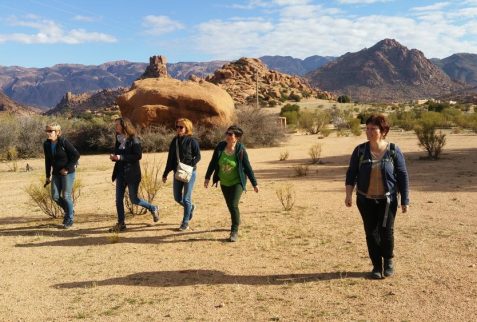

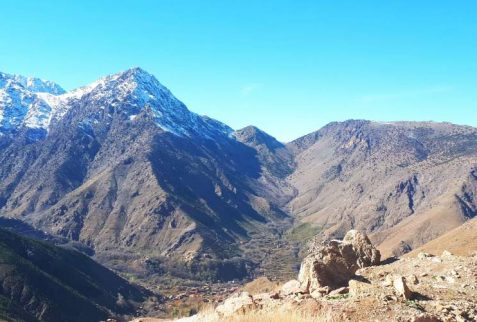


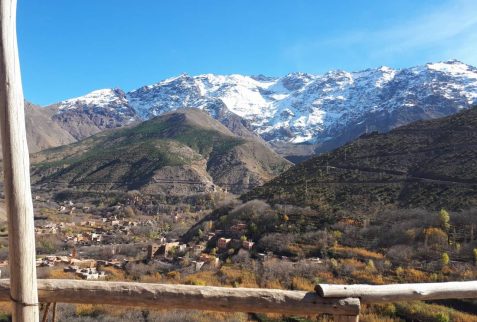


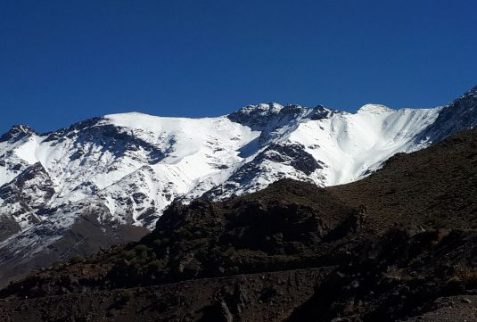
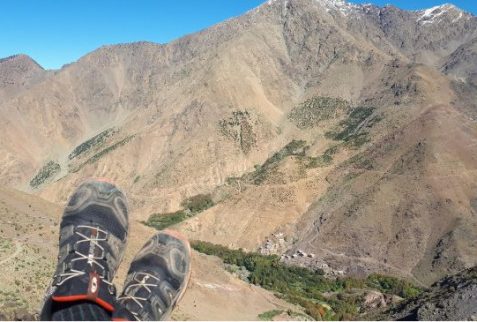

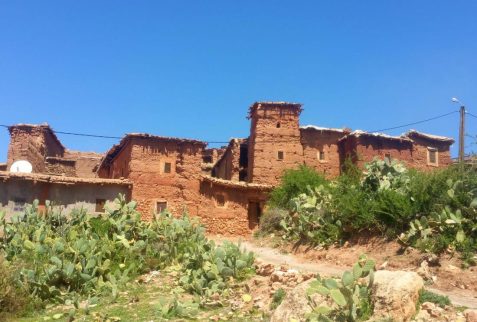
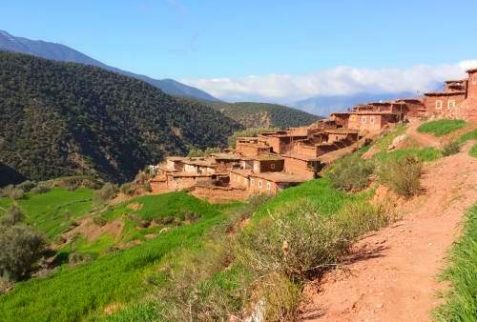

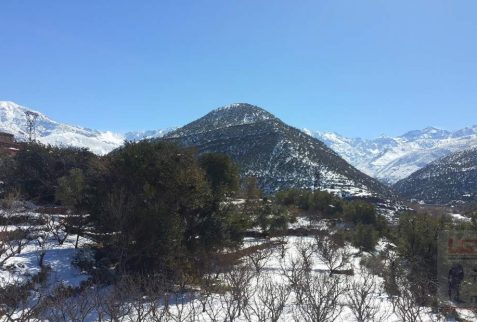
The High Atlas however, dominates the skyline from so many places, especially in the heart of winter when its peaks are covered in snow, usually from November to May, though some years that has been different. The slopes glow pink when the sun sets turning gold too at times. These peaks hide a myriad of remote valleys and villages, small towns like Imlil; the trailhead for most treks to Mount or Jbel Toubkal, are reached by local transport or mules. These are the indigenous people: the Amazigh, friendly, hardworking farmers, artisans and mountain guides. These mountains are majestic, regal and amazingly diverse, each valley having different geological composition arising in varying vegetation, trees, earth colour and cultivated crops.
You will also notice the language is not the same in these mountains, in the Rif, the Central and the High Atlas, there are different dialects of the Amazigh people, Tamazigh is spoken in most of the country, but Tashelheit south of Marrakech. In the Rif, they sound completely different. In the desert regions, there are many tribes so the languages are also varied. They all share the same Tifinagh Alphabet, which you can see on many signs and packaging as the language is become more integrated into daily life and recognised by the administration. It is now also taught in schools, which is a wonderful step to preserving indigenous culture.
You can combine biking and trekking adventures, or trekking in both the mountains with mules and Sahara with camels, for just a few days or a week or more.
We organise personalised packages completely assisted with all the services and logistics, ground staff and accommodations, for groups from 2 to 22 or more. Just get in touch.


